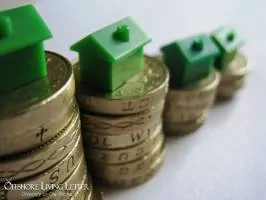
Building A Real Estate Investment Portfolio Using Leverage
Using Leverage To Build An Overseas Property Portfolio
Getting started as a property investor overseas isn’t as easy as becoming a U.S. real estate investor. U.S. gurus tout no-money-down systems, secrets, and schemes for building a big and profitable property portfolio starting with little cash. And… fair enough. Thanks to the multitude of leverage options available in the United States, from sellers willing to carry back part or all of a purchase price to 100% mortgages from banks, you can, indeed, easily get started creating a real estate investment portfolio.
In fact, that’s how I got started investing in real estate 20 years ago.
My first real estate purchase was a three-flat building in Chicago. The mortgage was a special the bank was offering—a 98% LTV for owner-occupied multi-unit buildings. The numbers worked out so that my mortgage payment was the same as the rent I had been paying, so my monthly cash flow situation didn’t change… as long as the other two units remained rented.
And they did. Everything went my way with that building, and, when I sold the building two-and-a-half years later, my leveraged rate of return was something like 1,800%. While that return was unbelievable… and likely unrepeatable… the risk was fairly high, as well, thanks to the high degree of leverage.
Investing Using leverage
It’s possible some places overseas to invest with leverage. However, as a foreign investor, you aren’t going to find 100% mortgages. Typically, you’ll be lucky to get an 80% loan-to-value mortgage. Generally speaking you’ll need to put 30% to 50% down to get bank financing overseas… and the other terms of the mortgage won’t be the same as you are used to in North America either.
I’m always on the lookout for property investments overseas that come with their own leverage. The featured opportunity in this month’s issue of my Global Property Advisor is a great example. The developer in this case is offering a financing option through a local bank that allows you to borrow up to 50% of the purchase amount. Interest is higher than for a U.S. mortgage… much higher… however, the rest of the world doesn’t collateralize loans and sell them on like the U.S. mortgage industry does. Banks in other countries don’t have the U.S. government to bail them out.
Take advantage of leverage overseas when it is available, but recognize that doing so means you’re adding to your risk profile. I recommend you have some excess cash flow from other income (from other rental properties, for example) that would allow you to cover any mortgage payments should your occupancy rates fall for any reason.
As I write, everyone is preparing for our Christmas party here at the Live and Invest Overseas headquarters in Panama City this evening. Looking forward to catching up with local friends. Hope you’re enjoying your holiday season, too, wherever in the world you’re celebrating this year.
Lief Simon
Happy Holidays.
“Lief, you cannot stop it. Don’t even try. California is in drought, but swimming pools are filled and lawns and golf courses are green. You are a fool to think that this will ever stop. Dream on.
“My opinion only.”
C.Z.



